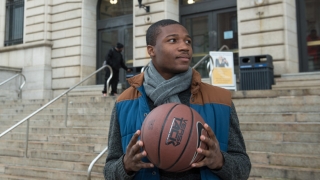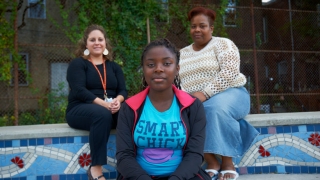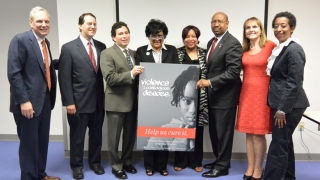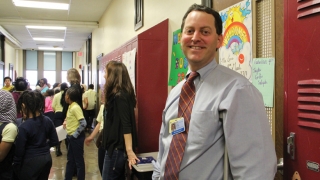Liam is smart, articulate, confident, determined, thoughtful and kind. He’s got a smile that will brighten your day, and he smiles easily and often.
 But smiling wasn’t always so easy for Liam. Four years ago, he suffered a violent assault in his neighborhood that left him badly injured and emotionally scarred.
But smiling wasn’t always so easy for Liam. Four years ago, he suffered a violent assault in his neighborhood that left him badly injured and emotionally scarred.
Liam had just been accepted into a very competitive high school in Philadelphia and was overjoyed at the news, having worked hard for months to keep his grades up and get into his “dream school.” He decided to put the books aside for one afternoon and celebrate by shooting some hoops at his local basketball court. But he ended up being jumped by a bunch of boys who beat and robbed him.
He suffered a fractured skull and a concussion, and his face was badly bruised and swollen. A family friend took him to the Emergency Department (ED) at Children’s Hospital of Philadelphia, where physicians and nurses treated his physical wounds and Miss Laura, a social worker with CHOP’s Violence Prevention Initiative (VPI), began to address his mental and emotional wounds.
After a violent injury, a lot of kids struggle with feeling safe in their neighborhoods, in school, and sometimes even in their homes. VPI's program to help assault-injured youth comprises doctors, social workers and psychologists who work with youth who've come into CHOP’s ED after suffering a violent injury. The program intervenes early to help kids heal and feel safe again, and to stem the cycle of violence that can often occur after an assault.
Liam suffered from post-traumatic stress disorder. He became overly anxious about everything. He couldn’t go to school and had trouble just walking down the street. Nowhere felt safe.
“I was always a nerd so I was used to getting bullied a lot, but what happened to me on the basketball court that night was something different,” he recalls. “I wasn't used to that. I wasn't prepared at all, and it took a deep toll on me mentally and emotionally.”
Miss Laura connected him with one-on-one therapists and a peer support group, and over time, things began to improve for Liam.
“Just to see a group of peers talking about their feelings and being OK with sharing that with each other felt great,” says Liam. “It made me feel open to sharing, and it showed me a few things I could do in the meantime of how to bring some of those stress levels down.”
Liam learned coping skills like listening to music and muscle relaxation and created a “safety plan” — a strategy to help keep him aware of his surroundings so he could stay safe and avoid getting jumped again.
“CHOP VPI really helps you — I don't want to say control those feelings — it helps you capture them and release them,” says Liam. “It teaches you skills you never knew you had. I've seen personally many youths grow and do things they never thought they could, including myself.”
Liam is now a peer mentor for the support group, helping youths in the position he once was in overcome the effects of a traumatic assault. He says getting connected to Miss Laura and VPI is one of the best things that ever happened to him.
“I learned so much and I want to give back,” says Liam. He is currently a freshman in college and plans to get a dual master’s degree in social work and law to become a child advocate. “I want to help youths just like me, in that same situation, and hopefully one day we can end violence together.”


